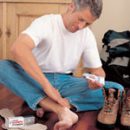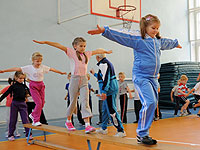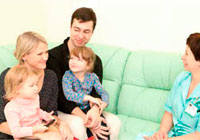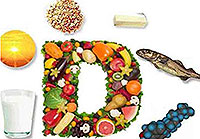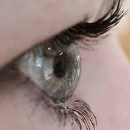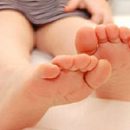What is a distress syndrome? What are the symptoms of a distress symptom in newborns? How treatment is carried out? Answers to these questions you will find in the article.
Content
Breathing - the basis of our life. The life of a newborn man begins with the first breath, but breathing problems can cause serious complications, sometimes incompatible with life.
Respiratory Distress Syndrome (RDS) - one of the serious problems with which you have to face doctors, finding premature babies. RDS is a disease of newborns, manifested by the development of respiratory failure directly or within a few hours after delivery. The disease is gradually dragging. Usually, 2-4 days of life is determined by its outcome: gradual recovery, or the death of a baby.
Why light child refuse to perform their functions? Let's try to look at the very depth of this vital organ and deal - what's what.
What is a surfactant
Our lungs consist of a huge number of small bags - Alveol. The overall surface of them is comparable to the soccer field area. Can imagine how tightly all this is stuck in the chest. But in order for the alveoli to perform their main function - gas exchange - they must be in a polished state. Prevents Alveol Special «lubricant» - Surfactant. The name of the unique substance comes from the Anguy words of Surface - the surface and Active - active, that is, the surfactant. It reduces the surface tension of the internal facing air, the Alveol surface, do not let them fall during the exhalation.
Surfactant - a unique complex consisting of proteins, carbohydrates and phospholipids. The synthesis of this substance is carried out by cells of the epithelium, lining alveoli - alveoocytes. In addition, this «lubricant» It has a number of remarkable properties - it is involved in the exchange of gases and fluid through the pulmonary barrier, in the removal of foreign particles from the alveoli surface, the protection of the alveoli walls from oxidizing agents and peroxides, to some extent - and from mechanical damage.
While the fruit is in the uterus, the lungs do not function, but, nevertheless, they slowly prepare for future independent breathing - at the 23rd week of development, the alveolocyte is beginning to synthesize the surfactant. Its optimal amount is about 50 cubic millimeters per square meter of the surface of the lungs - accumulates only by the 36th week. However, not all babies «Check out» before that time and for various reasons appear on white light earlier than 38-42 weeks. And here the problems begin.
 Insufficiently, the number of surfactant in the lungs of a premature child leads to the fact that on exhalation light, as it were slammed (falling out) and the child comes from every breath to relegate them. This requires high energy costs, as a result of the strength of the newborn, heavy respiratory failure develops. In 1959, American scientists M.E. Avery and J. MEAD was detected by the lack of a pulmonary surfactant in premature newborn children suffering from respiratory distress syndrome, so the main cause of RDS was established. The frequency of development of the RDS is higher than the less time on which the child was born. So, they are affected by an average of 60 percent of children born at a period of pregnancy less than 28 weeks, 15-20 percent - under a period of 32-36 weeks and only 5 percent - under a period of 37 weeks and more.
Insufficiently, the number of surfactant in the lungs of a premature child leads to the fact that on exhalation light, as it were slammed (falling out) and the child comes from every breath to relegate them. This requires high energy costs, as a result of the strength of the newborn, heavy respiratory failure develops. In 1959, American scientists M.E. Avery and J. MEAD was detected by the lack of a pulmonary surfactant in premature newborn children suffering from respiratory distress syndrome, so the main cause of RDS was established. The frequency of development of the RDS is higher than the less time on which the child was born. So, they are affected by an average of 60 percent of children born at a period of pregnancy less than 28 weeks, 15-20 percent - under a period of 32-36 weeks and only 5 percent - under a period of 37 weeks and more.
The clinical picture of the syndrome is manifested primarily by symptoms of respiratory failure, developing, as a rule, at birth, or 2-8 hours after delivery - the increase in respiration, inflating the wings of the nose, the increase in the intercostal intervals, participation in the respiratory act of the auxiliary respiratory muscles, the development of the sinusiness (Cyanosis). Due to insufficient ventilation of the lungs, a secondary infection is very often joined, and pneumonia in such babies is not uncommon. The natural process of recovery begins after 48-72 hours of life, but not all children this process is going fast enough - due to the development of the already infectious complications mentioned.
With rational hazing and careful observance of the treatment protocols of children with RDS, up to 90 percent of small patients survives. Transferred respiratory distress syndrome in the future practically does not affect the health status of children.
It is difficult to predict, develops from this particular RDS child or not, however, scientists managed to highlight a certain risk group. Sugar diabetes syndrome predispose to the development of syndrome, infections and smoking of the mother during pregnancy at the mother, childbirth by Cesarean section, the birth of the second of twins, asphyxia in childbirth. In addition, it is established that the boys suffer from the RDS more often girls. The prevention of the development of RDS is reduced to the prevention of premature birth.
Treatment of Distress Syndrome
Diagnosis of respiratory distress syndrome is carried out in the conditions of the hospital.
The basis of the treatment of children with RDS is a technique «Minimal touches», The child should receive only the absolutely necessary procedures and manipulations. One of the methods of treatment of syndrome - intensive respiratory therapy, various types of artificial ventilation of the lungs (IVL) .
It would be logical to assume that since the RDS is caused by the lack of a surfactant, then it is necessary to treat the syndrome by the introduction of this substance from the outside. However, this is conjugate with so much restrictions and difficulties that the active use of artificial surfactant preparations began only in the late 80s - early 90s of the last century. Surfactantherapy allows much faster to improve the condition of the child. However, these drugs are very expensive, the effectiveness of their use is high only if they are used in the first few hours after birth and uses modern equipment and qualified medical personnel, as there is a big risk of developing heavy complications.


